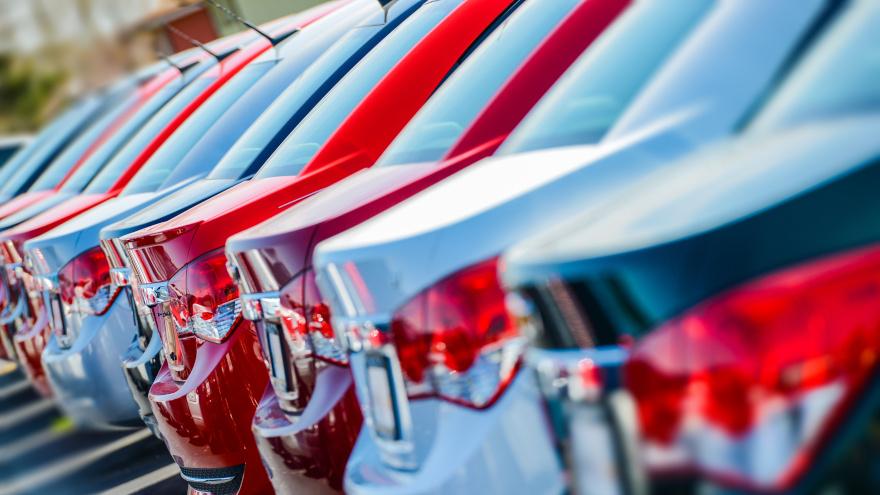JD Power’s used-car value index at record high

It may feel like everything you buy these days is 40% more expensive than it was a year ago.
With used vehicles, that’s actually the case if you’re a car dealer.
Similar to other industry indices, the J.D. Power Valuation Services Used Vehicle Price Index reached an all-time high in November.
The index, seasonally adjusted, was at 216.7 last month, according to J.D. Power, which said this was a 38.7% increase from November 2020, when the index was at 137.5
November’s index score also beat October’s by more than 9 points. Compared to the market trough last December, November’s index was up 80 points.
“Used prices continue to be bolstered by new-vehicle production and inventory constraints, elevated levels of new vehicle customer-facing transaction prices, tightening levels of used supply and increased dealer focus on used-vehicle operations,” J.D. Power said.
The firm would also add: “Wholesale prices at the industry level increased nearly 1.5% in November, which was not only the best performance ever for the period, but also a significant improvement vs. the previous five-year average decline of 3%. While wholesale prices rose again, the pace slowed from increases in September (5%) and October (3.5%).”
As reported earlier this month, the respective Black Book and Manheim wholesale vehicle price indices reached a third consecutive record month in November.
The Manheim Used Vehicle Value Index was at 232.5 in November. Adjusted for mix, mileage and seasonality, this marked a 43.5% year-over-year increase, with wholesale prices climbing 3.9% from October.
Without those adjustments, wholesale prices were up 43.8% year-over-year and 1.9% month-over-month, Cox Automotive said.
The Black Book Used Vehicle Retention Index was at 189.9 points for November, marking a 9.7-point (or 5.4%) month-over-month increase and a 45.4% year-over-year spike.
“With no short-term resolutions to new inventory problems, dealers are continuing to spend money on used inventory, pushing wholesale prices up to new records across all segments in November,” Black Book chief data science officer Alex Yurchenko said in a news release.
“Cars of all sizes and vans had the largest increases as used and new inventory in those segments declined to much lower levels compared to other segments of the market,” Yurchenko said. “We expect the used-car prices to increase again in December, but at a much lower rate as the volume of new inventory is starting to level off and consumer demand is softening a bit with record breaking used retail prices.”
Used-car prices were also moving up on the retail side. Citing PIN data, the J.D. Power Valuation Services report noted a 1.8% month-over-month and nearly a 23% year-over-year gain in retail used-car prices at franchised dealerships.
iSeeCars.com analyzed more than 1.9 million November sales of used vehicles ages 1 to 5 and determined they fetched an average of $31,848.
This was 27.9% higher than the average selling price in November 2020. And in October, prices for the same group of used vehicles was up 24.9% year-over-year, according to iSeeCars.
“Used car prices had drifted down, slightly, since they peaked in June, but they are back on the rise again, with the average used vehicle priced nearly over $7,000 above where it was last November,” iSeeCars executive analyst Karl Brauer said in an analysis.
“With microchip shortage-related plant shutdowns persisting throughout the year, automakers have not kept pace with pent-up demand, and lingering supply constraints that are expected to continue well into 2022,” he said.
Moving back to wholesale, auction sales volumes continue to see challenges.
Year-to-date, there have been 3.62 million wholesale auction sales, which is 13% softer than the same period of 2020, according to J.D. Power.
And compared to pre-pandemic sales, they’re off 25% to 30%, the firm said.
In November, there were 234,000 auction sales, a 24% year-over-year decline and a 22% month-over-month drop.
“Mass market sales are certainly more constrained, currently more than 15% lower than a year ago, which is being amplified by massive reductions in passenger car wholesale volume,” J.D. Power said.
“Premium wholesale sales are faring better, as sales for this sector are down a slight 1% when compared with the same period a year ago,” it added. “This continues to be a major contributing factor as to why premium prices aren’t up quite as much as mass market.”


